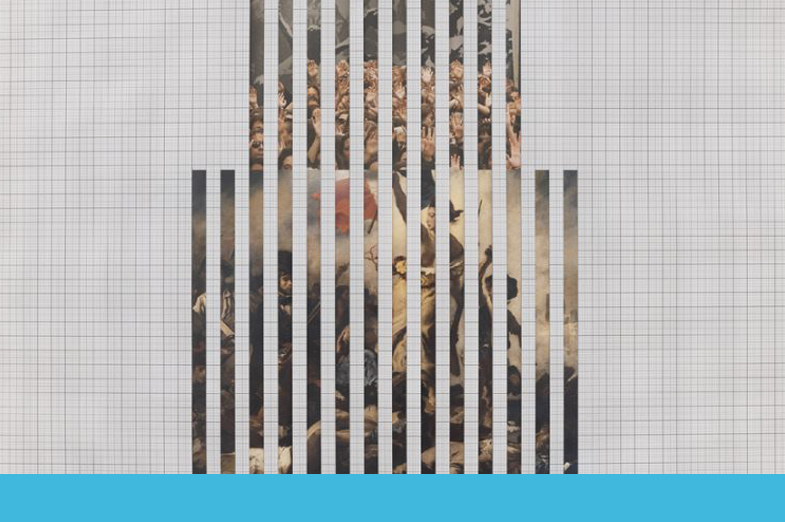
Home
›
Public programmes
› Activities
›
Revisions. Programme of activities for the exhibition “Goshka Macuga. In Flux”
Activities
›
Revisions. Programme of activities for the exhibition “Goshka Macuga. In Flux”
Revisions. Programme of activities for the exhibition “Goshka Macuga. In Flux”

The work of Goshka Macuga (Warsaw, 1967) is based on re-readings of the relationships between art, power and inherited narratives about historical events and people. The programme of activities will review the issues raised in the three main installations. Firstly, based on The Nature of the Beast (2010), the history of the Pavilion of the Spanish Republic will be re-examined during a talk about its reconstruction in the 1990s and a pro-active visit to its replicated building in Horta. An open call has also been announced regarding the active use of the installation’s central table, an element that Macuga designed as a real space for debate and meetings. Secondly, around the work Untitled (2011), an artistic action by Marla Jacarilla will establish a dialogue with Tadeusz Kantor’s 1967 performance, Letter. Lastly, and in the context of the work Plus Ultra (Further Beyond, 2009) and the idea of Spanish colonial expansion, collage workshops will be organised using this technique as an educational and political tool, aimed at teachers and children.
The programme also features a research project by Lola Lasurt called The section at risk. This will include three craft workshops, an aspect of Macuga’s practice of inviting local artists to take part in the historical investigations implicit in her projects. In this case, based on the project The Nature of the Beast, 2010, Lasurt proposes to focus the research on the study of the popular arts and crafts section that was included in the Spanish Pavilion of the Universal Exposition held in Paris in 1937, alongside the work of artists that today we consider milestones in modern art. The Nature of the Beast focuses on one of them, Guernica (1937) and its exhibition in London’s Whitechapel Gallery in 1939 to raise funds for refugees from the Spanish Civil War. Lasurt will carry out a large part of her research in the Library of the Pavilion of the Republic, currently located inside the replica of the pavilion, originally built in Paris in 1937, and re-created in the district of Horta-Guinardó in 1992.
Alongside her research, Lasurt will invite local artisans to give a series of workshops open to the public that will take place in the months of April, May and June. All the objects made in these workshops will relate to each of the disciplines included in the popular arts section of the Spanish Pavilion in Paris (pottery, basketry and an exhibition of popular textiles), with the aim of rethinking their current validity, while disseminating and expanding the historical research linked to The section at risk. In September, once the cycle of workshops and research is complete, the results will be presented by Lasurt and Neus Miró, curator of the exhibition.
In addition to these activities, a cycle of films selected by Goshka Macuga and the exhibition’s curator, Neus Miró, is also scheduled.
Lastly, in collaboration with Eix jove, a series of working meetings have been organised by the Grup d’Acció Creativa to complement the exhibition Goshka Macuga. In Flux, with the aim of creating a mediation activity for young people.
Activities of the cycle Revisions
· From 16.03.2022 to 25.09.2022 – The Nature of the Beast. Activation of the round table
· 30.03.2022 – Mediations around “Goshka Macuga. In Flux”, with Grup d’Acció Creativa (GAC) of Eix Jove
· 24.04.2022 – Collage workshop for story-making. Family activity with Teresa Rubio
· 27.04.2022 – Educational exchange meeting based on the proposals of the “Body word object” seminar
· 30.04.2022 – Engobes, incisions in clay and volcanic gravel
· 01.06.2022 – Visit to the Pavillion of the Spanish Republic
· 06.07.2022 – Cut-and-paste stories. Collage workshop with Teresa Rubio
· 22.09.2022 – The section at risk










